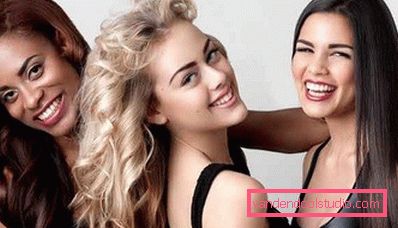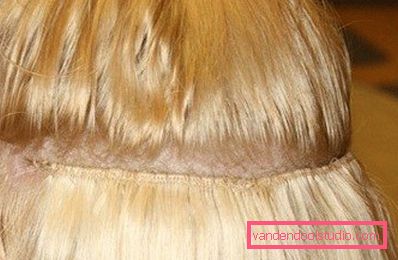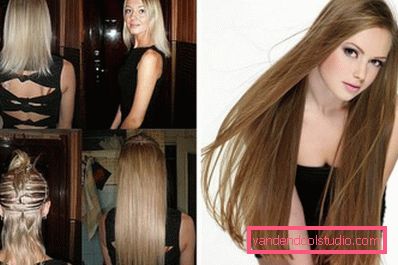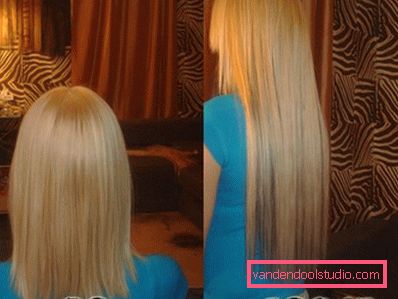Hair extensions on tresses or home make-up

Hair extensions on tresses or afar hair extensions — this technology has a dual name because of its particular procedure, but more on that later. This technology has received the proud title of ECO-building. Why IVF ?! Because this procedure is absolutely harmless, chemical agents are not involved in its implementation, and there is also no thermal effect. Hair extensions on tresses are due to the appearance of Negro girls who have always strived for long, straight strands, like those of Europeans.
Before the appearance of afaron, the black women had to go through a lot so that their curls were not so tight and curly. Many of these procedures brought great damage to the health of the hair. After several such hairdressing experiments, the Afro-beautys found the ideal solution, called the African buildup. How was the procedure invented ?! To produce hair extensions by sewing on tress, the girls began to braid short braids all over their heads, as well as medium-length French braids, and then with the help of threads and needles they began to sew their own sheared curls on them, and then artificial strands.
Tresses are thin strands fastened together by a strip of fabric, the width of such strands depends on the place of attachment. On the back of the head, the tresses are wide, and on the temples are thin, narrow. By the way, it was the detail with braid weaving that gave some people a reason to call the African buildup French. Nowadays, aerial nursing lost a little its former glory.
Tressy- safe and gentle means to increase the volume and length

First you need to understand in more detail what tress is. Tress, as noted above, these are overhead strands of different widths of artificial or natural hair, fastened together by special threads and special weaving. Made either by hand or by machine. Manual manufacture allows hair extension using the tress method to make an order of magnitude better and stronger than factory production. Of course, the price of a hand-made product will be much higher, but the number of combed and broken curls will be less.
Tress sold in specialized stores where you yourself can choose the desired length and color of future hair extensions. Typically, tressy are Chinese or Indian-made or European, Slavic. European hair is more popular because it is softer and silky. The cost of a set ranges from 200 to 300 dollars. While the price of other, more rigid is about 80 dollars.
African build-up and its advantages

- Security.
- Convenience in execution.
- Affordable cost and care.
The advantages of such a hairstyle are noticeable immediately after the procedure: neither tresses nor braids cause inconvenience. Take off you can sleep, comb, go to the bath, pool and swim in the sea. Both your own and accrued strands can be pampered with balsam or oils without fear that the tape strands will disappear. Afronarashchenny hair can also be dyed, straightened with an iron and blow-dry. Many women even manage to do such high-tech hairstyles, like a bobble or a bun. This is evidenced by the numerous reviews of visitors to the forum sites. Proper installation does not allow an outsider to notice the attachment of strands with pigtails. Just need a little workout and everything will be okay.
Of course, the rave reviews in favor of hair extensions by the African method say a lot, but are there any disadvantages? Yes.
Afronar hair extensions –minuses and contraindications
- African extensions can be done only on medium hair.
- Such a build cannot afford high styling or a ponytail.
- Quite complex care for the hair.
- The high cost of the procedure hair extensions on tresses.
- In the first days after the build-up, there is discomfort and itching from tightly braided pigtails.
- Correction is too dependent on the speed of hair growth. The faster your hair grows, the less time is left until the next procedure.
- The incompatibility of the method to people suffering from hypertension and sensitivity of the skin.
African build-up and technique of its execution
Hair extensions on tresses - a fairly simple procedure lasting 1.5 - 2 hours. To carry it out at home or in the salon, first of all, the hair strands themselves, a strong thread and a curved needle are needed.
- To begin with, the master divides the head into several horizontal partings, weaves short braids between them, and then with the help of a needle he sews tresses. To give the hair an ordinary thickness will require tress from one volume (100 grams of hair). To make the hair more pomp, you need 2 - 3 volume. The length of the accrued strands depends on its cost and the wishes of the client. The most affordable and popular among young people is 50 - 70 centimeters.
- As soon as you have the necessary amount of tresses sewn, then the next step will be cutting them to the length you need with stacking.

If you did everything right in the salon and you do not threaten any medical contraindications, then you can safely use your African hairstyle for 2.5 - 3 months.
Correction of accumulated tress
When your hair grows back, the pigtail falls lower, and this affects the visibility of the attachment points, they become noticeable to others. This is a signal for correction. Or you felt the weakening of the braids, it also signals the need for correction.

If in the other methods of building up, chemical means and tools were required for removal, then they would not be required in the afar. For correction, it is only necessary to twist the pigtails. After that, the same curls are re-sewn to the braids. The approximate time for correction is 2–3 months after the procedure of extension. Everything is natural individually, and depends on the growth rate of your hair.